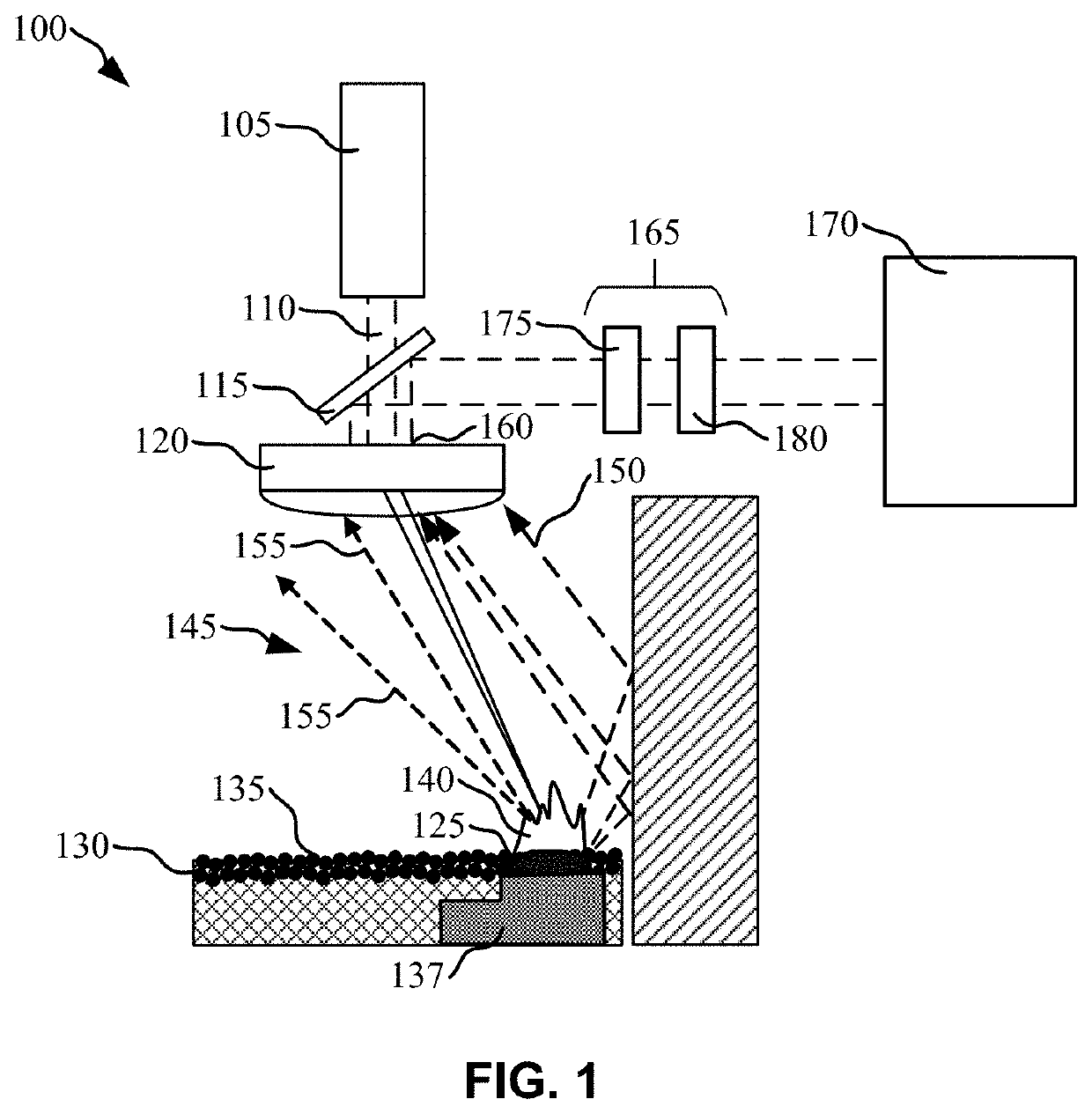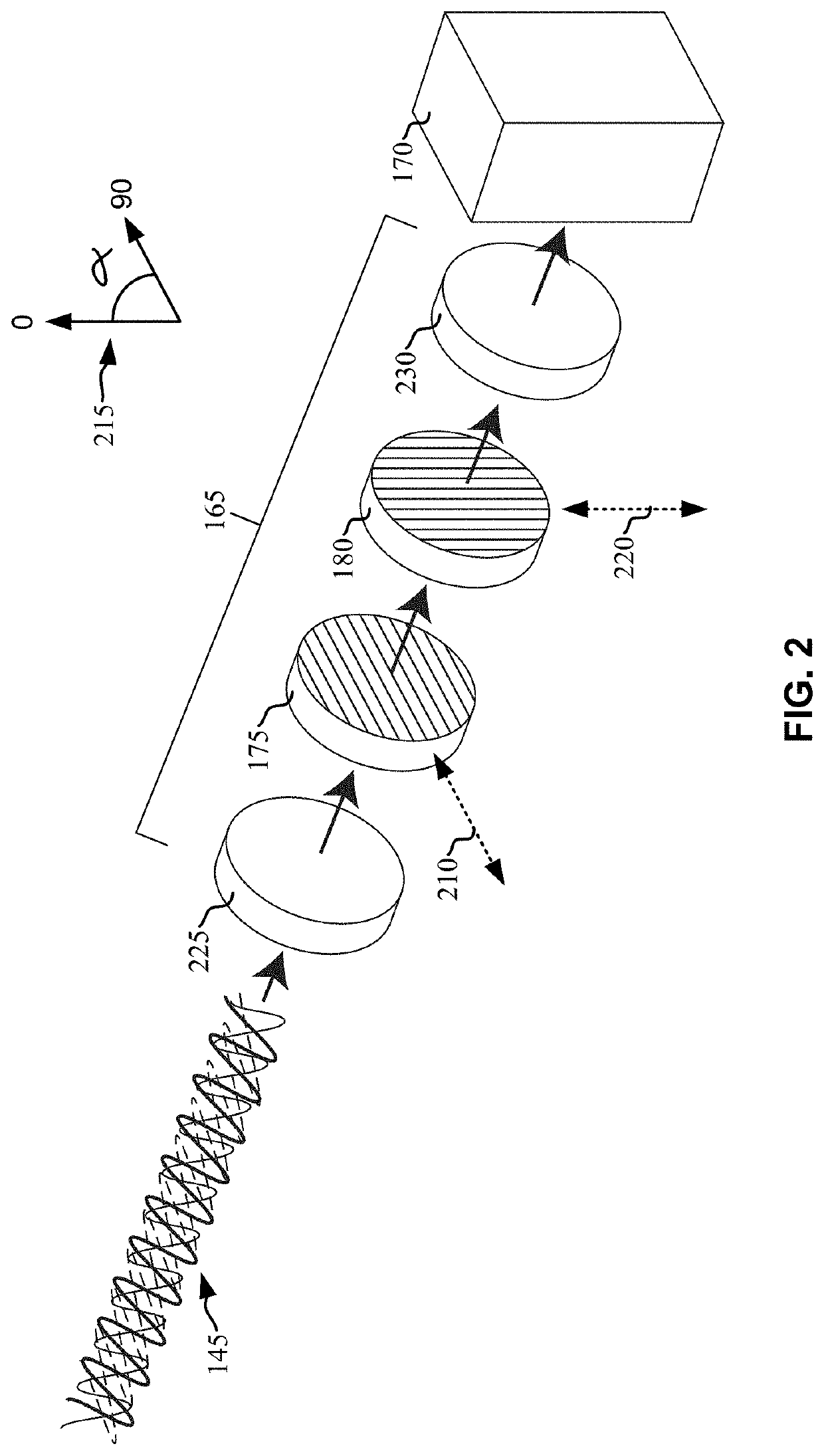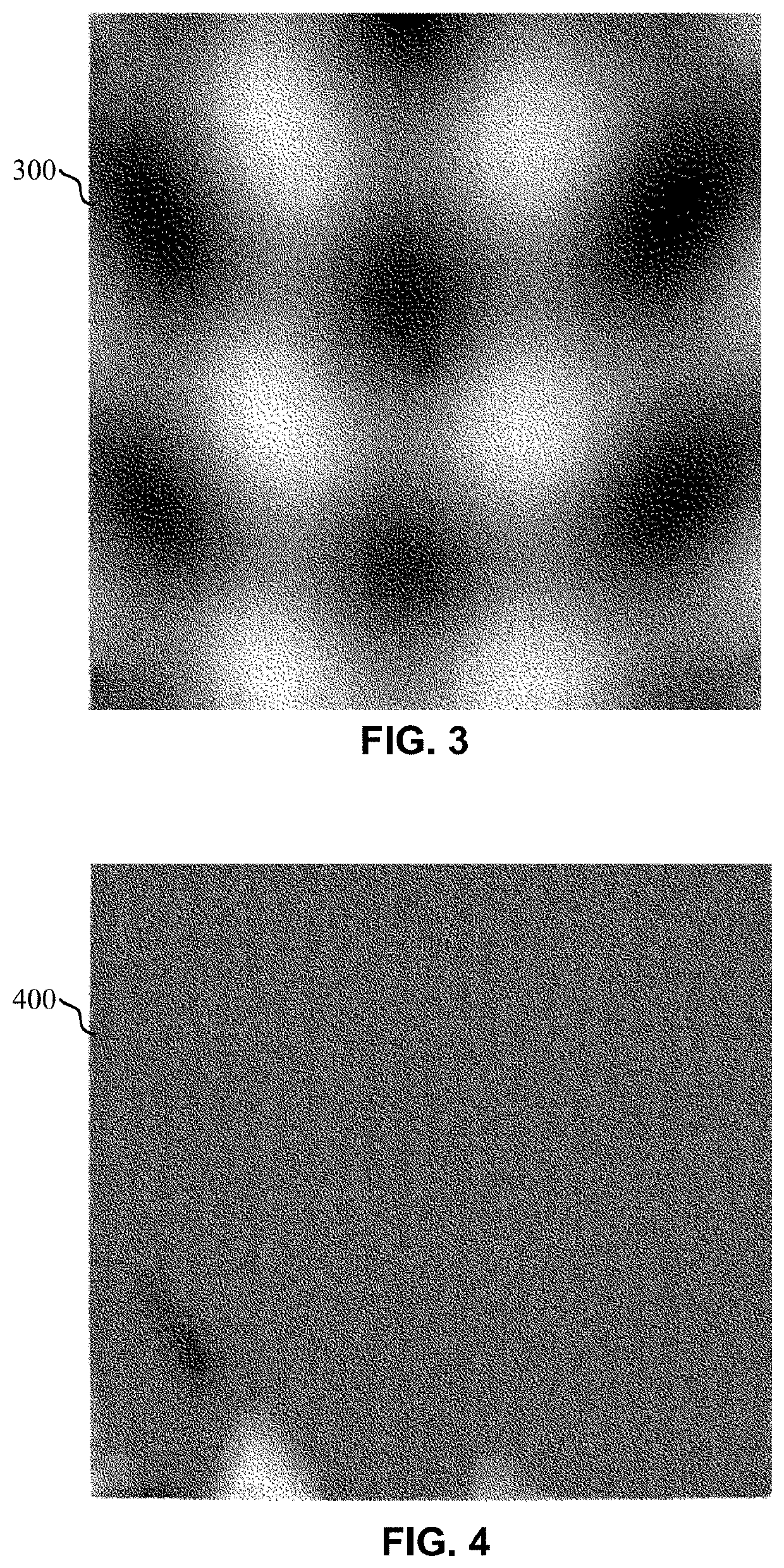Optical filter having dual polarization
a technology of optical sensors and polarization, applied in the direction of polarising elements, instruments, manufacturing tools, etc., can solve the problems of impaired sensing and control systems, and achieve the effects of accurate control of the fabrication process, accurate sensing of process parameters, and increased snr performance of optical sensors
- Summary
- Abstract
- Description
- Claims
- Application Information
AI Technical Summary
Benefits of technology
Problems solved by technology
Method used
Image
Examples
Embodiment Construction
[0015]Techniques disclosed herein relate generally to systems that receive and / or process optical signals. More specifically, techniques disclosed herein relate to the use of a dual polarization optical filter to improve the signal to noise ratio (SNR) of optical signals. In some instances, embodiments of the disclosure are particularly well suited for use with additive manufacturing systems because of the relatively high noise level and the stochastic nature of the optical signals, as described in more detail below.
[0016]For example, in some embodiments an additive manufacturing system employs a laser energy source to melt and fuse a work region of metallic powder. An optical sensor receives light emitted from the melt pool and laser plume. The received light can be stochastic in nature and may include both spurious signals as well as mixed polarizations. The received light is passed through a first partially transmissive polarization filter having a first polarization axis and thr...
PUM
| Property | Measurement | Unit |
|---|---|---|
| transmittance | aaaaa | aaaaa |
| transmittance | aaaaa | aaaaa |
| transmittance | aaaaa | aaaaa |
Abstract
Description
Claims
Application Information
 Login to View More
Login to View More - R&D
- Intellectual Property
- Life Sciences
- Materials
- Tech Scout
- Unparalleled Data Quality
- Higher Quality Content
- 60% Fewer Hallucinations
Browse by: Latest US Patents, China's latest patents, Technical Efficacy Thesaurus, Application Domain, Technology Topic, Popular Technical Reports.
© 2025 PatSnap. All rights reserved.Legal|Privacy policy|Modern Slavery Act Transparency Statement|Sitemap|About US| Contact US: help@patsnap.com



